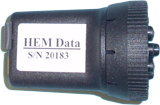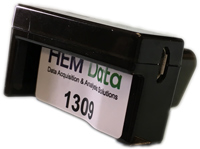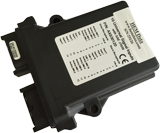There are many applications for automatic wireless transfer of in-vehicle logger data. These include vehicle/fleet performance, warnings/alert notifications, and tracking. Choosing the right wireless communication is important for cost, update rate, and availability.
Wi-Fi
Wireless transfer via Wi-Fi can send data either to a local server (intranet) or to a remote server using internet access.. The data logger communicates with a wireless router or other wireless access point to transfer the stored data to its destination.
Availability
Wi-Fi requires that the test vehicle or vehicles return to a specific location equipped with a wireless access point, and does so on a sufficiently frequent basis.
Data Frequency
Since the data is logged and then transferred later, stored data files are transferred upon the vehicles return.
Cost
Cost to transfer over Wi-Fi is potentially zero if the infrastructure already exists. If not, the costs can consist of a one-time fee for the wireless access point, and additional infrastructure setup. Also, a monthly fee from an internet provider is required to transfer data to a remote server. This is much less expensive than cellular service in multiple vehicles.
Cellular
Cellular transfer sends data to a remote server using a mobile network operator (MNO) such as Verizon, AT&T or Sprint. A contract with a MNO is required.
Availability
Cellular service is available anywhere and anytime that the mobile network operator has coverage.
Data Frequency
Data can be streamed in real-time, or logged and sent at a defined interval or at ignition shut-off.
Cost
Cellular cost has a monthly fee based on total kilobytes transferred per month. The monthly fee is not dependent on the transfer rate. The modem price, however, is dependent on the transfer rate.






